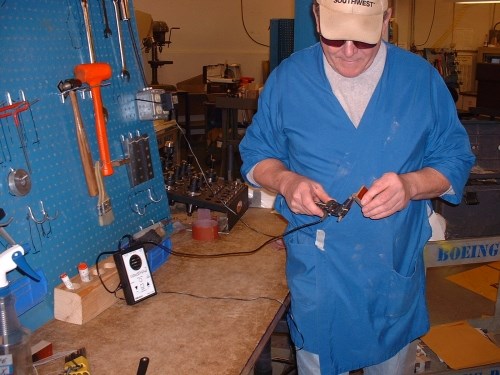Does a Shop for the Blind Differ from a “Regular” One?
These calipers “speak” measurements to those who aren’t able to see them.

These calipers “speak” measurements to those who aren’t able to see them.
In my mind, certain shop visits stand apart from others. I’m especially glad I got the chance to visit the Seattle Lighthouse, a shop staffed primarily by the visually and/or hearing impaired. After I returned, I was asked by many how the shop was different. This excerpt from my story offers a glimpse: "Its aisleways are a bit wider, and customary yellow safety lines have been built up slightly with concrete to help guide a person’s cane. Some work orders are printed in a larger-than-typical font size, while others are embossed with Braille symbols for fingertip translation. Additional lighting brightens machine workstations and illuminates cutting tools in action. The din of whirring spindles and buzzing light ballasts often includes the “beep” of a modified edge finder signaling that it has contacted a part or fixture during job setup. Digital voices, beckoned with the touch of a button, can be heard relaying part measurements, machine axis positions or critical part program information to machine operators. Some workers talk to each other without saying a word." At the end of the day, though, it’s just like all shops. Its goal is to produce good parts, and that’s exactly what it does. For Boeing, no less.
Since the story appeared, I’ve heard second-hand stories about other shops that extend employment opportunities to folks you might not immediately picture working in a manufacturing facility. If one of those shops is yours, then I’d like to hear from you. Shoot me an e-mail, and I’ll give you a call to chat about it.

.jpg;width=70;height=70;mode=crop)







.png;maxWidth=300;quality=90)



